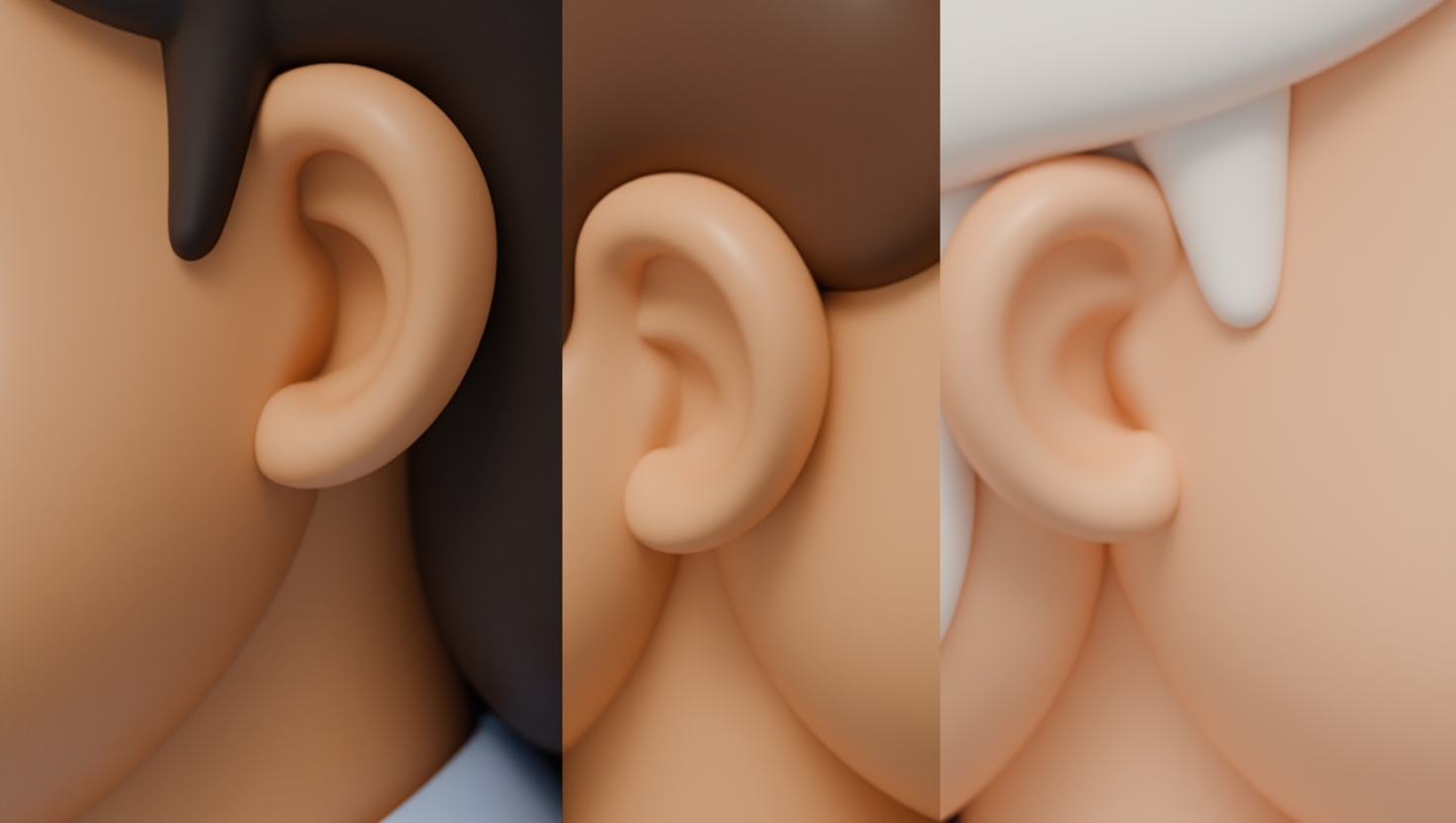What Are Big Ears?
Big ears refer to ears that are notably larger or more prominent than average. This can describe ears that either stick out more than usual or simply appear bigger in size when compared to typical ear shapes and proportions. To put it into perspective, imagine comparing two people side-by-side: one might have ears that slightly protrude, while the other’s ears seem more pronounced, similarly to how some people’s noses or eyes vary in size. Both are perfectly natural differences.
In fact, ear size can be quite diverse across the population. For example, studies have shown that the average adult ear measures about 2.5 inches (around 6.3 cm) in length, but this can vary widely, sometimes by more than a centimeter. People with “big ears” typically fall above this average range or naturally have ears that stand out more from the side of the head.
What Causes Big Ears?
Several factors contribute to why someone may have big ears. These influences often overlap and reflect normal human variation:
- Genetics: Family heritage plays a major role in determining ear size and shape. If a person’s parents, siblings, or other relatives have noticeable or prominent ears, it’s likely they may inherit similar ear features. This pattern follows basic hereditary principles, where certain physical traits are passed down across generations.
- Developmental variations: Ears develop through complex processes before and after birth, which causes natural differences in their final size, shape, and position. For example, the ear’s cartilage may grow at slightly different rates, or the angle at which ears are set can vary from person to person. These variations are typically harmless and represent the diversity found in human anatomy.
- Non-pathological reasons: Sometimes, larger ears simply exist without any associated health concerns or underlying conditions. Having big ears is often just one of many normal physical traits that make individuals unique.
When Should Someone See a Doctor?
While big ears are usually a harmless physical trait, there are certain situations where consulting a healthcare professional may be advisable:
- If ear size causes discomfort or pain – Occasionally, prominent ears may create issues with helmets, headbands, headphones, or sleeping positions that press on the ear. If this leads to chronic soreness or skin irritation, a medical opinion may be helpful.
- If there are hearing difficulties or noticeable changes in hearing – Although ear size itself rarely affects hearing ability, associated structural differences or infections might cause issues that require attention.
- If the ear’s appearance leads to significant emotional or psychological distress – For some individuals, big ears may affect their self-esteem or cause social anxiety, especially in children and teenagers facing peer pressure or teasing. Professionals such as pediatricians, counselors, or plastic surgeons can provide guidance or treatment options, including counseling or corrective surgery if appropriate.
How Can Big Ears Affect Life?
Big ears can impact people’s lives in various subtle ways, largely influenced by personal perception and social factors. These effects include:
- Self-esteem: Some individuals feel self-conscious about their ear size, especially during adolescence when appearance plays a significant role in social identity. An example might be a teenager hesitant to participate in activities like swimming or sports to avoid unwanted attention to their ears. Awareness around this issue has increased, helping many embrace their unique features.
- Social interactions: Feeling different because of big ears can sometimes lead to social anxiety or avoidance. For example, a child with prominent ears might experience teasing at school, which can affect their overall social development. Supportive families and schools make a critical difference.
- Work or school: Appearance concerns occasionally impact confidence in professional or academic environments. Someone who worries about their big ears might avoid situations where they feel overly scrutinized, such as public speaking or social gatherings.
It’s important to emphasize that many people with prominent ears live full, happy, and successful lives. Understanding, acceptance, and positive reinforcement are key factors in reducing any negative impact. In fact, some cultures view bigger ears as a sign of wisdom or good fortune, showcasing the diversity of perspectives around this trait.
What Does Research Say?
Research confirms that ear size varies widely across different populations and is primarily influenced by genetics. For example, a 2018 anthropometric study measured ear sizes across various ethnic groups, demonstrating that larger ears are common in certain populations without any adverse health consequences.
Big ears themselves are rarely linked to health problems. Most people with big ears do not experience pain, hearing loss, or other medical issues related to ear size alone. Instead, psychological and social factors often play a greater role in how ear size affects individuals.
Psychological studies highlight that awareness and acceptance — both personal and social — are essential in reducing potential emotional impact. Counseling and support groups can make a positive difference for those struggling with self-confidence due to ear prominence.
---
Ready to breathe easier? Schedule your visit at [Sleep and Sinus Centers](https://www.sleepandsinuscenters.com/) today—book your appointment online or call (678) 689-1100 for personalized care tailored to your needs.
This article is for educational purposes only and is not medical advice. Please consult a qualified healthcare provider for diagnosis and treatment.
Don’t let allergies slow you down. Schedule a comprehensive ENT and allergy evaluation at Sleep and Sinus Centers of Georgia. We’re here to find your triggers and guide you toward lasting relief.



